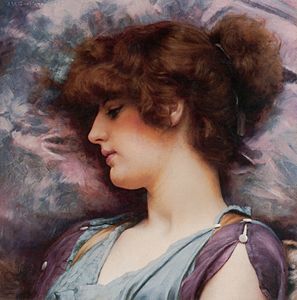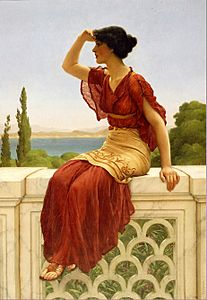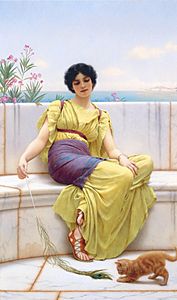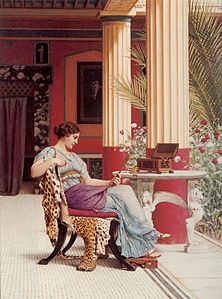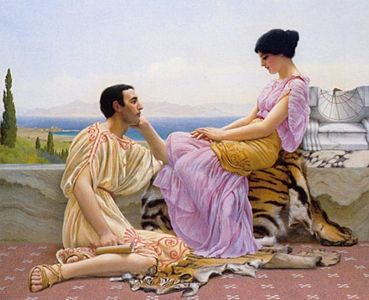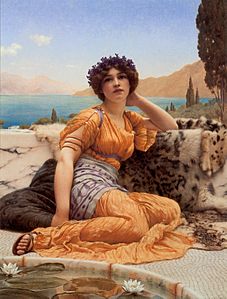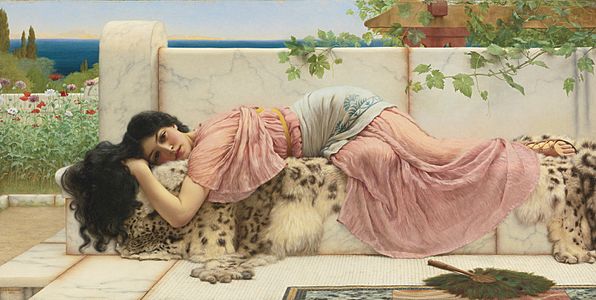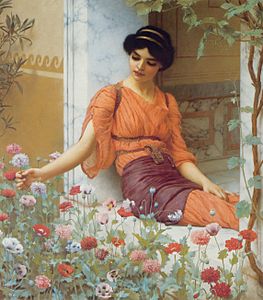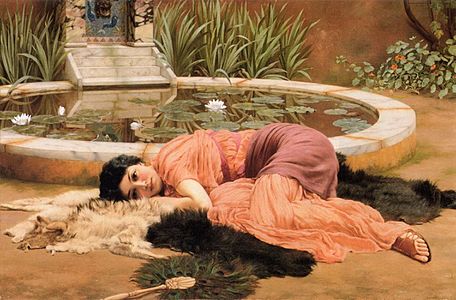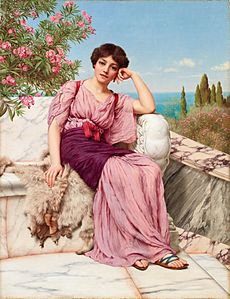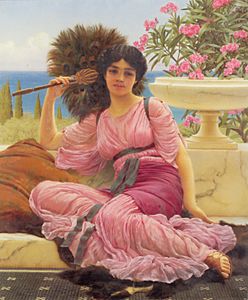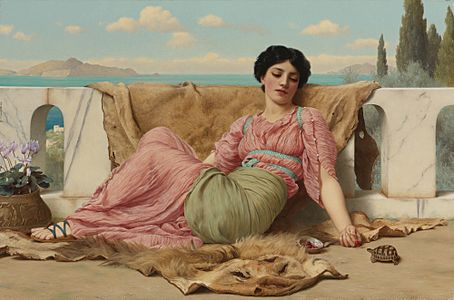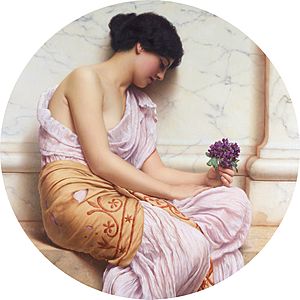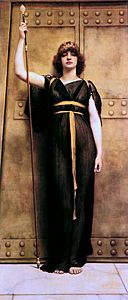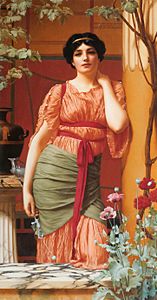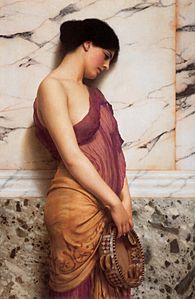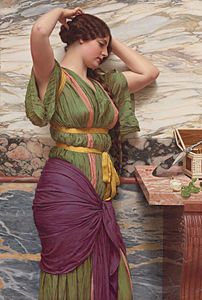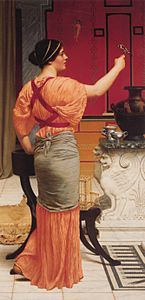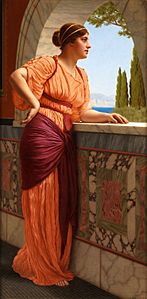John William Godward facts for kids
Quick facts for kids
John William Godward
|
|
|---|---|
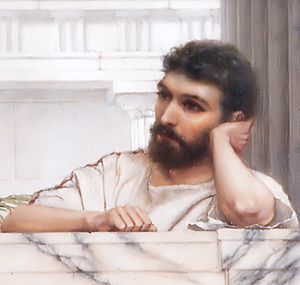
Possible self portrait, detail from Waiting for an Answer (1889)
|
|
| Born | 9 August 1861 |
| Died | 13 December 1922 (aged 61) |
| Resting place | Brompton Cemetery, West London |
| Nationality | English |
| Known for | Painting, drawing |
| Movement | Neo-Classicism, Academism |
| Patron(s) | Lawrence Alma-Tadema |
John William Godward (born August 9, 1861 – died December 13, 1922) was an English painter. He lived at the end of the Neo-Classicist art period. He was a student of Sir Lawrence Alma-Tadema, another famous painter. However, Godward's style of art became less popular when modern art started to become famous.
Godward's Early Life
John William Godward was born in 1861 in Wimbledon, England. His parents were Sarah Eboral and John Godward. His father worked as an investment clerk. John was the oldest of five children in his family. He was named after his father and grandfather. He was christened at St Mary's Church, Battersea in October 1861.
His Career as an Artist
Godward started showing his paintings at the Royal Academy in London in 1887. The Royal Academy is a famous art institution.
In 1912, he moved to Italy with one of his models. Because of this, his family stopped talking to him. They even cut his picture out of family photos. Godward came back to England in 1921. He died in 1922 and is buried in Brompton Cemetery in West London.
One of his most famous paintings is Dolce far Niente (1904). This painting was bought by Andrew Lloyd Webber in 1995. Godward often painted more than one version of his artworks. For example, he made an earlier version of Dolce far Niente in 1897. He also made another version in 1906.
Only one photograph of John William Godward is known to exist today.
Godward's Art Style
Godward was a Victorian Neo-Classicist painter. This means he was inspired by the art of ancient Greece and Rome. He was similar in style to Sir Lawrence Alma-Tadema. Both artists loved to paint Classical architecture. They often showed buildings made of marble in their artworks.
Godward's painting titles often show his inspiration. He was very interested in Classical Antiquity, especially Ancient Rome. This was another thing he shared with Alma-Tadema.
During Godward's time, many people knew a lot about classical history. So, artists like him had to be very careful with details. They needed to make sure their paintings looked real. Alma-Tadema was an archaeologist as well as a painter. He visited historical sites and collected old items. He then used these items in his paintings. Godward also studied details like buildings and clothes. This helped his works look very real and accurate.
Godward also painted other things very carefully. He often showed animal skins in his art. Examples include Noon Day Rest (1910) and A Cool Retreat (1910). He also painted wildflowers beautifully. You can see this in Nerissa (1906) and Summer Flowers (1903).
Many of Godward's paintings show beautiful women in careful poses. Because of this, some people mistakenly think he was a Pre-Raphaelite artist. Pre-Raphaelite artists often painted stories from medieval times. However, Godward's choice of subjects was different. He focused on ancient civilizations. This makes him a true Victorian Neo-classicist.
Godward became known for his paintings of young women. They were often in classical settings. He was very good at showing different textures. He could make skin, marble, fur, and fabrics look very real. His interest in classical times came from when he lived. The last big classical art movement in England happened from the 1860s to the 1890s.
Gallery
- John William Godward's works
- Standing poses


